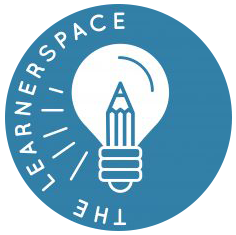The process of co-designing a learning space with students, in general, comprises several sessions, which can be adapted to the school’s needs, time, and schedule. In general, the stages are as follows:
- A shared reflection on learning.
The initial session pairs students and teachers in discussing learning, at a profound level, analyzing how both adults and teachers learn, what engaging learning represents, what turns each group off in learning, how they prefer to learn, and a series of other questions which all focus and point towards discerning what works and results in more significant learning. This reflection is carried out through the use of some interactive surveys, providing real-time feedback that allows students and teachers to compare and contrast their respective views on learning. - Principles of learning.
Immediately thereafter, and based on the results of the above-mentioned surveys, a series of principles that will guide the design of the shared learning space will be summarized and collated from the initial reflection process. Again, utilizing interactive web-based tools, a large group can very quickly converge towards a series of principles that will become the guideposts for the design of the learning experience. - Inventory of passions.
Once a series of basic tenets that will be the guidelines of the learning space is agreed upon, students and adults will then explore, again through the use of some interactive tools, the areas that they are interested in, are passionate about, and they would like to learn more about. From very general topics some more specific learning areas, the process results in the desired number of groups, so the students and adults can sign up to participate in a group in order for the learning project to be developed catering to their interests and passions. - Learning outcomes.
Once the groups are formed, the adults participating in them, depending on the numbers, will be responsible for the integrity of the learning process. That is, the teachers that share the learning space with students are not responsible for generating content but rather for ensuring that relevant learning occurs and high-quality learning outcomes are achieved. Initially, a project, product design, or some other kind of learning process must be agreed upon, stages determined, objectives laid out, and deadlines set for deliverables so that, within the time allocated for the development of the project, students and teachers can work cooperatively to finalize the project in question. This very important initial session allows the adults in the group to steer the drawing up of objectives and learning outcomes so that students are also aware of the importance of managing their learning in a systematic and rigorous way. - Development of the project.
For most of the time allotted for the project, students and teachers will work in developing various stages of the have agreed upon, in showcasing their progress and an interactive blog so that other teams can provide feedback and be aware of what the other rooms are doing in real-time. The way this unfolds is highly contingent upon the conditions under which the project can be developed at a particular school, since it can very well be a multi-week process that occurs once a week, or, rather, are one or two day concentrated effort where the regular schedule is superseded by this interdisciplinary learning initiative. - Exhibition.
At the end of the process, it is highly advisable to stage an exhibition of the projects, so the whole school community can benefit from a showcase of the projects developed, as a way to provide visibility to the initiative regarding its longer term objectives of inspiring a change in pedagogy, as well as providing students and adults with a natural outlet to show what they have accomplished over the project.
It is very important to state that it may very well be that the topics chosen for the development of the projects result in seemingly trivial areas of knowledge, i.e. sports, gardening, rock music, etc. However, it is precisely when these apparently nonacademic areas result the focus of the learning experience that the real deeper issues are at stake, since no topic can be rendered trivial when it is approached as a learning opportunity, and the learning process ensures that high-quality learning occurs, thus exemplifying that lifelong learning can truly be an enriching and self-sustainable process.
<– Back to The Learnerspace Project
